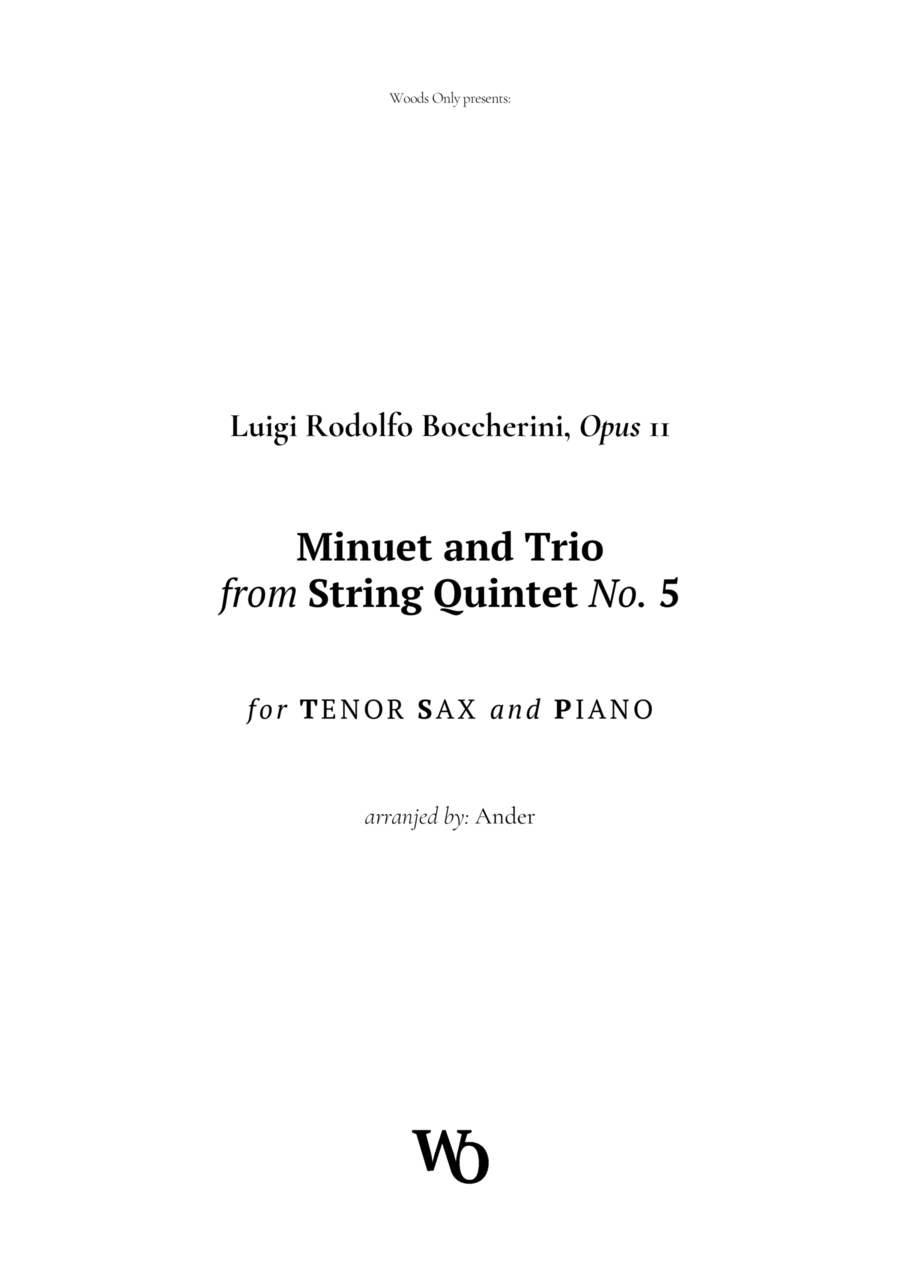Piano,Tenor Saxophone - Level 1 - Digital Download SKU: A0.1160615 Composed by Luigi Boccherini. Arranged by Ander. Baroque,Classical,Instructional,Traditional,Wedding. Score and part. 4 pages. Woods Only, Arrangements #760910. Published by Woods Only, Arrangements (A0.1160615). This simple arrangement adapted for tenor saxophone and piano was imagined for a group of beginner students who want to start their immersion in classical music, of course with the help of a teacher. Even though the original work is for strings, this did not prevent this beautiful adaptation, where the original essence of the work was maintained, being made only an adaptation of the tonality and some adaptations in the tessitura of the instruments. This piece can be used for professional and academic recitals, didactic material and repertoire for ensemble practice as well, which does not prevent professional musicians and instructors from using it for performances of their preference.Luigi Boccherini was born in the city of Lucca, in northern Italy. He studied cello and became a virtuoso who eventually moved to Spain, where he worked with the Spanish royal family for the rest of his life. His String Quintet in E major, Op. 11, No. 5, G 275, was written in 1771 and published in 1775, and is one of his most famous works.The quintet is famous for its minuet and trio, third movement which is often played as an independent piece outside the context of the full quintet. This is notably the most famous, it is in 3/4 time, in the key of E Major modulating to A Major. This is a beautiful work, and not just the third movement, with good partial writing for all. The lovely, flowing melodies and rhythms are typical of Boccherini. The quintet is suitable for both concerts and home performances.
